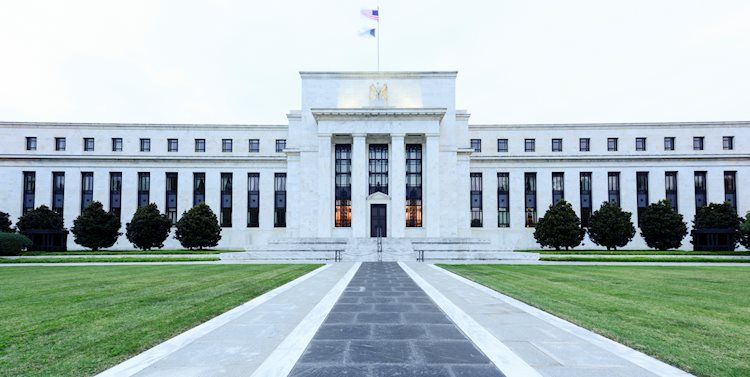By Tasos Dasopoulos
Emergency and permanent measures amounting to 5 billion euros are now on the government’s table ahead of TIF, with the planning taking into account the good course of the Greek economy in 2022 but also the effects of the hybrid war that Russia is waging against Europe with a weapon the natural gas.
A basic principle of the economic staff is to meet the fiscal target that wants the economy to go from a primary deficit of 2% of GDP expected for this year (despite the supplementary budget to be submitted in the next few days) to a primary surplus of 1% of GDP in 2023.
However, this strand alone needs a fiscal adjustment of 3% of GDP, i.e. 5.73 billion unless it is decided to lower the target for the primary surplus in 2023 due to a more general fiscal easing foreseen for the entire EU. due to the energy crisis.
An unstable factor for the rest of 2022 and 2023 will be the prices of energy products and especially natural gas, which has increased fivefold in one year, reaching today close to 250 euros per thermal megawatt hour from 50 euros per thermal megawatt hour in the summer of 2021.
On the other hand, Greece continues to benefit from double-digit increases in exports (mainly due to tourism) and investments. Especially for the investment sector, Ministry of Finance sources note that after decades “Greece is selling”.
As far as direct investments are concerned, they believe that last year’s record of 5 billion euros will be doubled for this year and this momentum will continue somewhat reduced for 2023 as well.
The public investment program, which is expected to exceed 12 billion for both 2022 and 2023, with the main providers being the Recovery Fund and the NSRF 2021-2027, will also help the private sector’s efforts.
This combination of negative and positive for the next period should provide additional fiscal space of 3 to 5 billion euros for emergency support measures against punctuality as well as permanent interventions.
A common target for both speed measures will be the incomes of employees, non-employees and pensioners, in an effort to replace incomes lost last year and this year due to the coronavirus pandemic and from mid-2021 until now due to the energy crisis.
The support measures until the middle of 2023
In the first phase, the economic staff will repeat the successful recipe they followed during the pandemic years, supporting the economy with large sums, so that unemployment continues to decrease without having a wave of foreclosures in the market.
In this direction, interventions of 2.5-3 billion euros are planned for the next period, which will mitigate the effects of the accuracy until the middle of 2023.
The “core” of the interventions will be the support against the continuous price increases of natural gas, which also increase the prices of electricity.
The initial intervention which was estimated to reach 2 billion, is now estimated to increase to 3-3.5 billion to continue to absorb up to 90% of the readjustment clause that sets electricity tariffs on fire until the middle of next year as the specific measure was originally announced.
This important intervention will also be framed by a 3rd subsidy on motor fuels for the last months of the year with the same criteria and the same amounts (subsidy from 55 to 100 euros) given the drop in the international price of oil which is gradually passing to retail prices.
Another intervention is also being considered for the economically weaker, who are proportionally more pressured not only by the price increases of energy products but also by the increases in food and other household consumption items.
It is a given that the 200 euros for approximately 2,000,000 first-time beneficiaries will increase. The object of choice will be whether to increase horizontally or whether a proportional increase will finally be chosen.
If, that is, this time there will be a scale for the aid which will start from 200 euros based on some criteria and will reach 300 or 400 euros for the citizens facing the biggest problems.
Along with the emergency measures, the financial staff plans for this year an emergency intervention in a permanent measure. It concerns a further increase in the heating allowance by increasing the basic amount on which the heating allowance is calculated from 300 to 350 euros.
The interventions in 2023
At the same time, however, the financial staff has put on the table their plans for new permanent interventions for employees and pensioners for 2023, which exceed 2.5 billion euros in cost. In particular, the following are examined:
The abolition of the special solidarity levy for the private, public sector and pensioners. The measure as implemented in 2020 and 2021 had a cost of approximately 800 million euros.
The extension of the measure to the public sector will require additional fiscal space of 450 million euros. The specific measure is already “locked in” and will be implemented in any case next year.
The first pension increase after 12 years, for about 1,000,000 pensioners who do not have a personal difference, at a rate of 6%-6.5% since half of the increase in inflation and half of the increase in GDP will be given as an increase.
Based on the testimony of competent sources of the Ministry of Finance, the measure will be included in the draft Budget that will be submitted in the first 10 days of October, while the estimated cost will be approximately 450 million euros.
The final solution to the issue of retrospectives on the cuts made in 2012 after the main pensions and on the supplementary pensions and gifts.
Brussels has been ringing a fiscal bell for retroactive pensions at every opportunity, even more so after the decision of the CoE which vindicates the pensioners who went to court over the cuts made in 2012 in supplementary benefits and gifts.
The case is a financial bombshell, since meeting the demands of the CoE decision requires an expenditure of 2.5 billion euros which is very difficult, if not impossible, to find in today’s financial conditions.
The solution being considered is a proposal similar to the one we had for the main pensions in order to close the issue once and for all. If in the end only the approximately 200,000 who had appealed to the courts are paid, a cost of at least 600 million euros should be calculated.
The new increase in the minimum wage from May. Given the large loss of household purchasing power due to inflation, the economic staff wants a partial replacement soon, especially for low-wage earners.
In this direction, there will be a start of the relevant negotiations with the change of time so that by May the minimum wage will have incorporated its third increase, probably reaching 751 euros.
The new extension until the end of the year and the permanence from 2023 of the low VAT rates applicable from mid-2020 for catering, tourism, transport, theaters, cinemas and from 2021 for gyms and dance schools. The measure has a cost of around 280 million euros and expires at the end of the year.
The start of the phasing out of the pretense fee. There is also an intervention on the table for the end of pretense.
The European Commission has pointed out in the latest report based on the European Semester its abolition, since it is not a proportional tax and is an obstacle to entrepreneurship.
However, the intervention in this specific measure will depend on the budgetary developments, while the complete abolition of the measure would have a cost of approximately 650 million euros.
Finally, a measure that is being considered to be implemented from next year is the permanent reduction of tax rates from 22% to 20% with an additional cost of 300-350 million euros. This last measure will be decided once the revised forecasts for 2023 are completed.
Financial data
It is a given that all this can only be implemented if Greece has the fewest possible losses from the growing energy crisis that is expected to hit Northern Europe from next month.
Raising the growth rate above the 3.1% official forecast to 4% or even higher is a necessary condition for any planning.
In the big picture, the Ministry of Finance considers that regardless of the ups and downs that may occur in 2022 and 2023, in growth due to the crisis the average annual GDP growth rate for the two years may reach 3.5%.
The sources of additional growth will again be investment, exports and tourism, while it is assumed that hidden growth will gradually emerge due to the implementation of the Recovery Fund reforms.
In more measurable terms, the first source of funding is the gradual reversal of support measures against punctuality which are expected to exceed 12 billion euros this year, of which 5.5-6 billion euros will be covered by the Budget.
These amounts will be reduced by 50% in 2023, creating fiscal space of around 3 billion. The forecast is that, despite the current persistence of inflation, prices will gradually begin to decline and the supply chain to recover.
There are also great hopes for tourism, which this year is expected to surpass the 18.3 billion in turnover of 2019 and reach 20 billion euros. Even if in 2023, due to the general economic crisis, we will not have a new record, it is expected that the next one will be a good year for the so-called “heavy industry” of the Greek economy. Tourism alone is expected to bring in additional revenues of around 2 billion euros to the public coffers this year.
Also, another 1.5 billion euros is estimated to be the additional collections from indirect taxes and excise duties due to the continuous price increases in fuel and food.
As far as 2023 is concerned, the hopes lie in the projects of the Recovery Fund that will begin to be implemented further reducing unemployment, new investments, the recovery of exports and the high rate of growth that the Greek economy is expected to maintain.
Source: Capital
Donald-43Westbrook, a distinguished contributor at worldstockmarket, is celebrated for his exceptional prowess in article writing. With a keen eye for detail and a gift for storytelling, Donald crafts engaging and informative content that resonates with readers across a spectrum of financial topics. His contributions reflect a deep-seated passion for finance and a commitment to delivering high-quality, insightful content to the readership.






